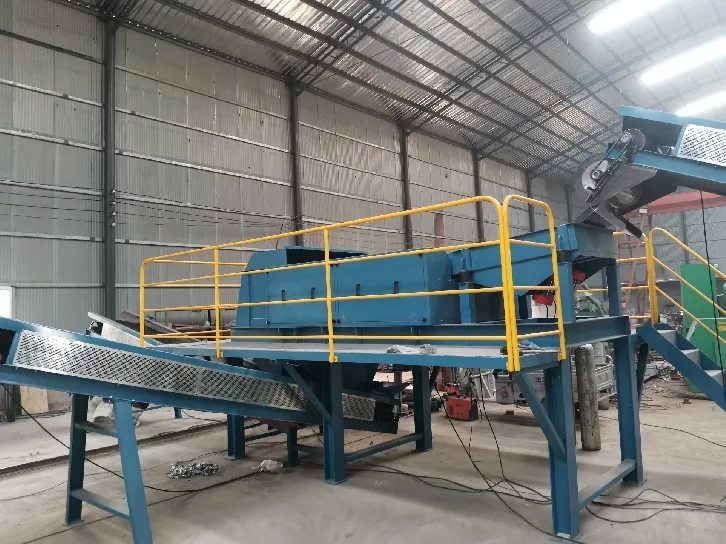

10월 . 31, 2024 17:02 Back to list
The Importance of Steel Scrap Processing Plants
Steel scrap processing plants play a crucial role in the recycling and sustainability of steel production. As the global demand for steel continues to rise, the efficient handling and recycling of steel scrap become increasingly important. These facilities help to recover valuable raw materials, reduce waste, and minimize environmental impact while promoting the circular economy.
Steel scrap can be generated from various sources, including old cars, household appliances, construction materials, and industrial manufacturing processes. The recycling of steel scrap is not only environmentally friendly but also economically advantageous, as producing steel from recycled materials requires significantly less energy than manufacturing it from virgin ore. In fact, recycling steel saves approximately 60% of the energy required to produce new steel, which translates to reduced greenhouse gas emissions and a smaller carbon footprint.
A steel scrap processing plant typically involves several stages of operations, including collection, sorting, shredding, and melting. Initially, the required scrap material is collected from different sources. Once gathered, the scrap undergoes sorting to remove impurities and separate it into different grades. This step is critical, as the quality of the output steel depends significantly on the quality of the input scrap.

After sorting, the scrap is shredded into smaller pieces to facilitate the melting process. Shredding ensures that the entire batch can be uniformly heated and melted in the furnace. The melted scrap is then poured into molds to create new steel products. This process not only recycles steel but also helps create job opportunities in the local community, further contributing to economic growth.
Another essential aspect of steel scrap processing is its impact on reducing landfill waste. Steel is one of the most recycled materials globally, with a recycling rate exceeding 80%. However, a significant amount of steel scrap still ends up in landfills, which poses both environmental and economic challenges. By enhancing infrastructure for steel scrap processing, we can divert more materials from landfills and promote sustainable waste management practices.
Moreover, the growth of steel scrap processing plants aligns with global initiatives aimed at combating climate change and promoting sustainable development. Governments and organizations worldwide are increasingly recognizing the importance of recycling as a strategy to achieve environmental goals. Incentives and regulations that support the establishment of more processing facilities can further accelerate these efforts.
In conclusion, steel scrap processing plants are vital for promoting sustainability, reducing waste, and fostering economic growth. By improving the efficiency of scrap recycling, we can significantly mitigate the environmental impacts associated with steel production. Investments in technology, infrastructure, and innovative practices in the steel scrap industry will pave the way for a more sustainable future, allowing us to harness the full potential of this valuable resource. As we continue to strive for a greener planet, the role of steel scrap processing plants will undoubtedly remain paramount.
Latest news
Troubleshooting Common Eddy Separator Problems
NewsJul.04,2025
The Role of Metal Recycling Plants in Circular Economy
NewsJul.04,2025
The Impact of Recycling Line Pickers on Waste Management Costs
NewsJul.04,2025
Safety Features Every Metal Shredder Should Have
NewsJul.04,2025
How Industrial Shredders Improve Waste Management Systems
NewsJul.04,2025
How Cable Granulators Contribute to Sustainable Recycling
NewsJul.04,2025